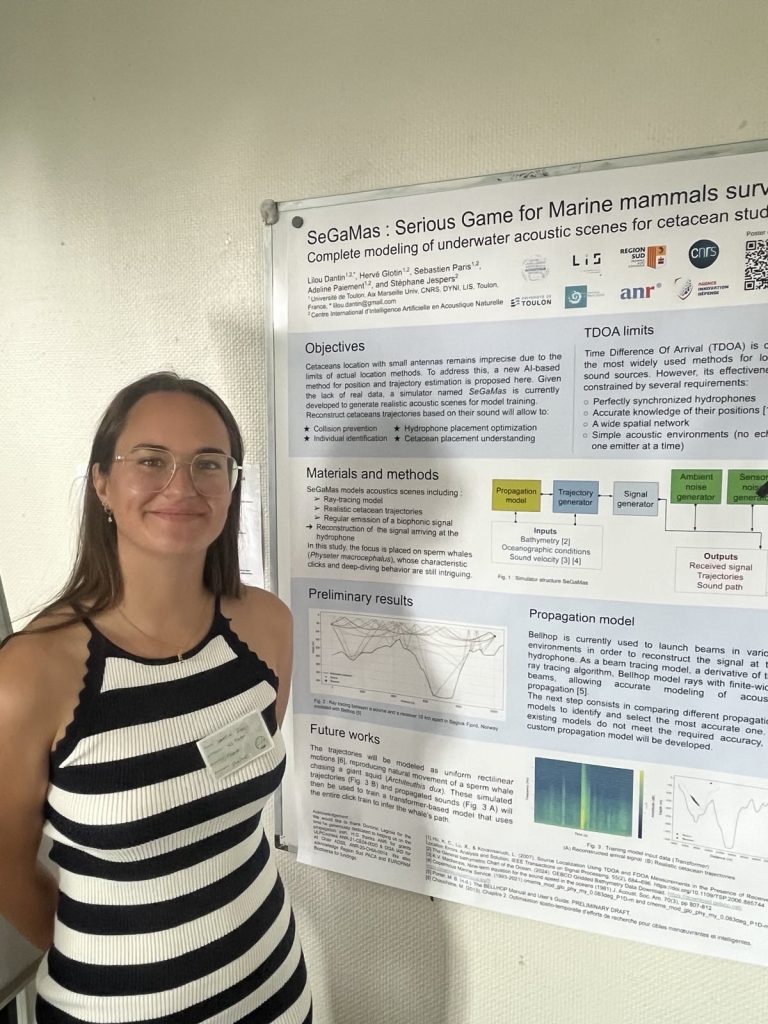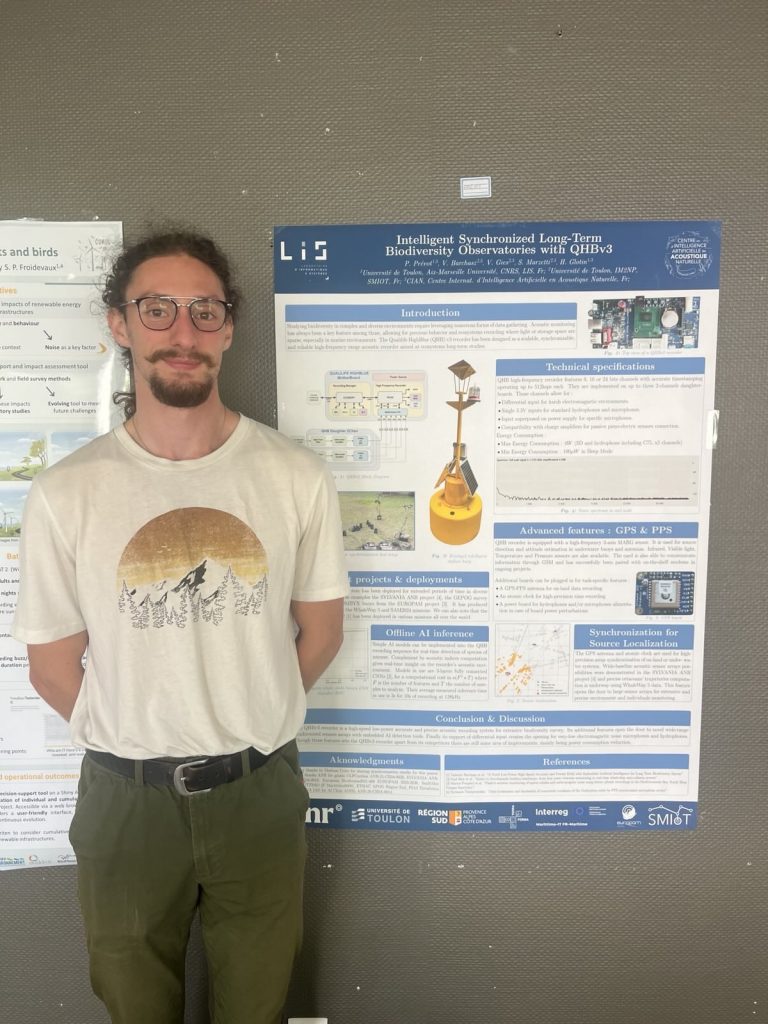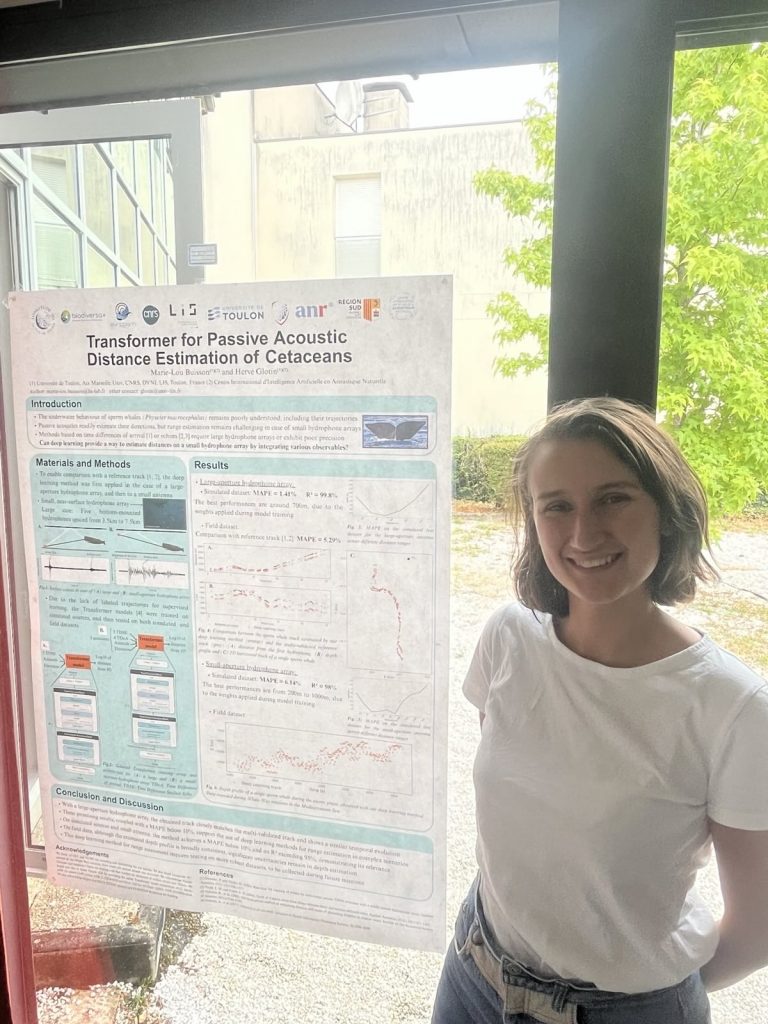Our presenters…



Source range estimation based on tranformer
by Marie-Lou Buisson and al.
- The underwater behaviour of sperm whales (Physeter macrocephalus) remains poorly understood, including their trajectories
- Passive acoustics readily estimate their direction, but range estimation remains challenging in case of small hydrophone arrays
- Existing methods based on time differences of arrival [1] or echoes [2,3] require large hydrophone arrays or lack precision
Can deep learning provide a way to estimate distances by integrating various observables ?
Marine Mammals survey
by Lilou Dantin and al.
Cetaceans location with small antennas remains imprecise due to the limits of actual location methods. To address this, a new AI-based method for position and trajectory estimation is proposed here. Given the lack of real data, a simulator named SeGaMas is currently developed to generate realistic acoustic scenes for model training.
Intelligent Synchronized Long-Term Biodiversity Observatories with QHBv3
by Philémon Prévot and al.
Considering using embedded analysis tools directly in recording systems can be a key feature for some applications, we developed our own recorder as a system for combining low-power, high-quality recording with embedded efficient statistical and AI analysis models. Depending on
the mission the recorder can also transmit realtime reports and alerts, minimizing the amount of data to process offline and allowing real-time responses to specific events. Through this platform we also hope to stimulate embedded lowpower AI models development for bioacoustic research.


_edited.jpg)